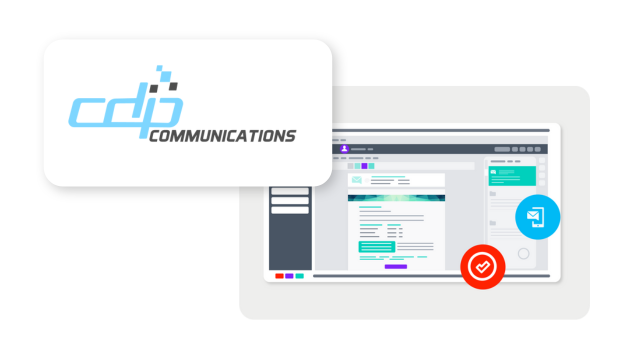
The cracks in your financial processes might seem small at first — missed payments here, approval delays there. But as your business grows, those inefficiencies compound, costing time, money, and momentum. For financial leaders who already use automation tools, the real question is no longer if automation can help but whether your existing solutions are keeping pace with your growing needs.
As you oversee cash flow, profit and loss (P&L), and process optimisation, you need solutions that align with your strategic priorities. Are your current tools overly complex, forcing your team to create workarounds? Are they flexible enough to align with your processes? Outdated or rigid automation systems can stall progress and undermine efficiency. It’s time to evaluate whether your financial automation setup is doing enough to help you scale effectively.
The Signs Your Business is Ready to Scale
Have you outgrown your existing financial automation tools? Are outdated workflows slowing you down? Here are some clear signs it’s time to upgrade your approach.
Sign 1: Manual Approvals Are Slowing Down Processes
Are manual steps still causing delays in your approval workflows? Even with some automation in place, gaps in your processes can create bottlenecks that slow down vendor payments and other critical financial activities. This is especially problematic for industries where project timelines depend on swift approvals and payments.
This is where automated approval workflows come into play. These solutions eliminate inefficiencies by enabling faster decision-making across distributed teams. They ensure that your financial processes operate smoothly, even at scale. Businesses upgrading their automation tools can expect:
- Faster invoice processing
- Quicker vendor payments
- Improved cash flow management
- Enhanced project timeline adherence
By upgrading your financial automation, you’re not just streamlining approvals - you’re positioning your business to scale more effectively and freeing up valuable time for strategic initiatives.
Sign 2: You’re Spending Too Much Time Fixing Errors
Manual data entry processes are inherently susceptible to human error, resulting in inaccurate invoices, incorrect payments, and reconciliation complexities. These errors not only don't just strain vendor relationships—they can result in missed early payment discounts, late payment fees, and penalties, directly impacting your bottom line.
Automation minimises errors by integrating with your ERP and leveraging technologies like Optical Character Recognition (OCR). With OCR, data from invoices and other documents is automatically captured, entered into the system, and shared seamlessly, eliminating the need for manual intervention. This precision ensures accuracy in accounts payable (AP), accounts receivable (AR), and reconciliation processes, freeing up time and resources for strategic initiatives.
Sign 3: Lack of Visibility into Financial Metrics
Without real-time access to key financial data, financial leaders and back-office teams often struggle to track cash flow, monitor outstanding payments, or identify potential bottlenecks. Older automation tools might not provide the level of visibility or analytical insights needed to drive strategic decision-making.
Intuitive dashboards and advanced reporting tools offer real-time analytics, empowering financial leaders and back-office directors with valuable insights into their organisation's financial performance. By incorporating AI capabilities like predictive analytics, businesses gain a powerful edge. On the AP side, predictive analytics can study payment history, forecast cash flow, and recommend optimal payment schedules to enhance cash management. On the accounts receivable (AR) side, it can help prioritise collections by predicting when payments are likely to come in, allowing teams to focus efforts where they matter most.
This comprehensive visibility enables data-driven decision-making, optimises cash flow management, effortlessly tracks outstanding payments, and quickly identifies and addresses bottlenecks within financial operations.
Sign 4: Cash Flow Delays Are Hurting Your Business
Delayed receivables can create a ripple effect across your organisation, impacting vendor relationships and limiting opportunities for growth. If your current automation setup isn’t helping you proactively manage these delays, it might be time to level up. When customers fail to remit payments promptly, businesses encounter difficulties in meeting their financial obligations to vendors and suppliers. Inefficient AR processes and a lack of visibility into customer payment behavior often lead to cash flow disruptions that hinder financial stability.
Modern financial automation tools optimise workflows and provide actionable insights. AI-driven tools can identify payment patterns and use predictive analytics to forecast delays, giving you the ability to act preemptively. For instance, automation can prioritise invoicing and send automated reminders to customers with a history of late payments, ensuring quicker collections. Automation ensures faster payments by streamlining invoicing, reminders, and prioritisation of collection, all while reducing errors.
By addressing cash flow inefficiencies, you can maintain financial stability, build stronger vendor relationships, and reinvest in growth initiatives.
Sign 5: Your Team is Overwhelmed by Routine Tasks
When your finance team finds themselves consumed by mundane, repetitive tasks, it's time to consider automation. Data entry, invoice tracking, and manual filing are necessary evils that drain significant time and resources away from higher-value activities. This predicament leaves your team with little capacity for tasks like strategic analysis, market trend interpretation, and identifying new revenue streams—critical areas for driving business growth.
Intelligent automation solutions can alleviate the burden of these routine responsibilities. By leveraging advanced technologies like robotic process automation (RPA), artificial intelligence (AI), and machine learning (ML), organisations can streamline and automate tedious yet critical processes. These tools go beyond simple automation—they integrate with existing systems to optimise workflows, ensuring every task is completed efficiently and accurately. This strategic shift frees up valuable human resources, allowing finance professionals to redirect their efforts toward more substantive tasks.
This is especially true for businesses operating with lean teams. Automation can enhance efficiency without incurring the costs associated with expanding headcount. In fact, according to a survey, 36% of U.S. businesses reported that payment automation saved their finance teams nearly 10 hours per week, totaling approximately 500 hours annually. This shift not only streamlines operations but also empowers your team to tackle high-value projects that were previously sidelined due to time constraints.
The Benefits of Acting Now: Why Upgrading Your Financial Automation is a Game-Changer
In today's dynamic business landscape, upgrading your financial automation tools is essential for maintaining efficiency, profitability, and scalability. Modern solutions empower finance teams to do more with less, eliminating bottlenecks and unlocking new opportunities for growth.
Unlocking Growth Potential
Addressing inefficiencies such as approval delays and data entry errors can help businesses lay the foundation for scalable growth. Modern automation empowers small and medium-sized enterprises to expand operations without the burden of increasing overhead costs.
Enabling Data-Driven Decision Making
Leveraging the power of AI-driven insights and real-time dashboards, Chief Financial Officers (CFOs) can predict cash flow trends, identify potential risks, and make informed strategic decisions that drive profitability and long-term success. These dashboards can be easily shared with unlimited users, ensuring all stakeholders have access to critical insights. Data is also contextualised through charts and graphs, making complex information easier to understand and act upon. Predictive analytics enhances visibility into payment patterns, enabling proactive measures that improve cash flow stability.
Enhancing Resilience and Agility
Automation ensures financial processes adapt to market fluctuations, compliance changes, and customer needs. Seamless integration with existing ERP systems minimises disruption, ensuring smooth transitions as your business evolves. This flexibility gives you the agility to navigate uncertain economic conditions. Seamless integration with existing ERP systems minimises disruption, allowing finance teams to focus on higher-value activities like growth planning and customer retention.
Boosting Operational Efficiency
Automation reduces manual tasks, such as data entry and invoicing, enabling teams to focus on higher-value work. With technologies like robotic process automation (RPA) and machine learning (ML), businesses can save significant time and resources while increasing accuracy.
Strengthening Competitive Advantage
By improving accuracy, reducing delays, and fostering stronger relationships with customers and vendors through efficient processes, businesses that embrace automation gain a significant competitive edge. Companies using advanced automation report higher satisfaction levels from stakeholders, thanks to faster payment cycles and reduced errors.
Future Proof Your Financial Operations
If your current automation tools are holding you back, upgrading to modern solutions can transform your operations. By saving time, reducing costs, and improving decision-making, financial automation positions your business for long-term success.
Financial automation can help businesses to:
- Boost efficiency and reduce costs by automating repetitive tasks.
- Improve accuracy and minimise errors through automated processes.
- Gain valuable insights from real-time data and analytics for data-driven decision-making.
- Optimise cash flow by streamlining invoicing, collections, and other processes.
- Enhance customer satisfaction and vendor relationships through expedited, accurate financial transactions.
Ready to level up? Learn how Quadient's financial automation solutions can transform your operations and help you maintain a competitive edge.





